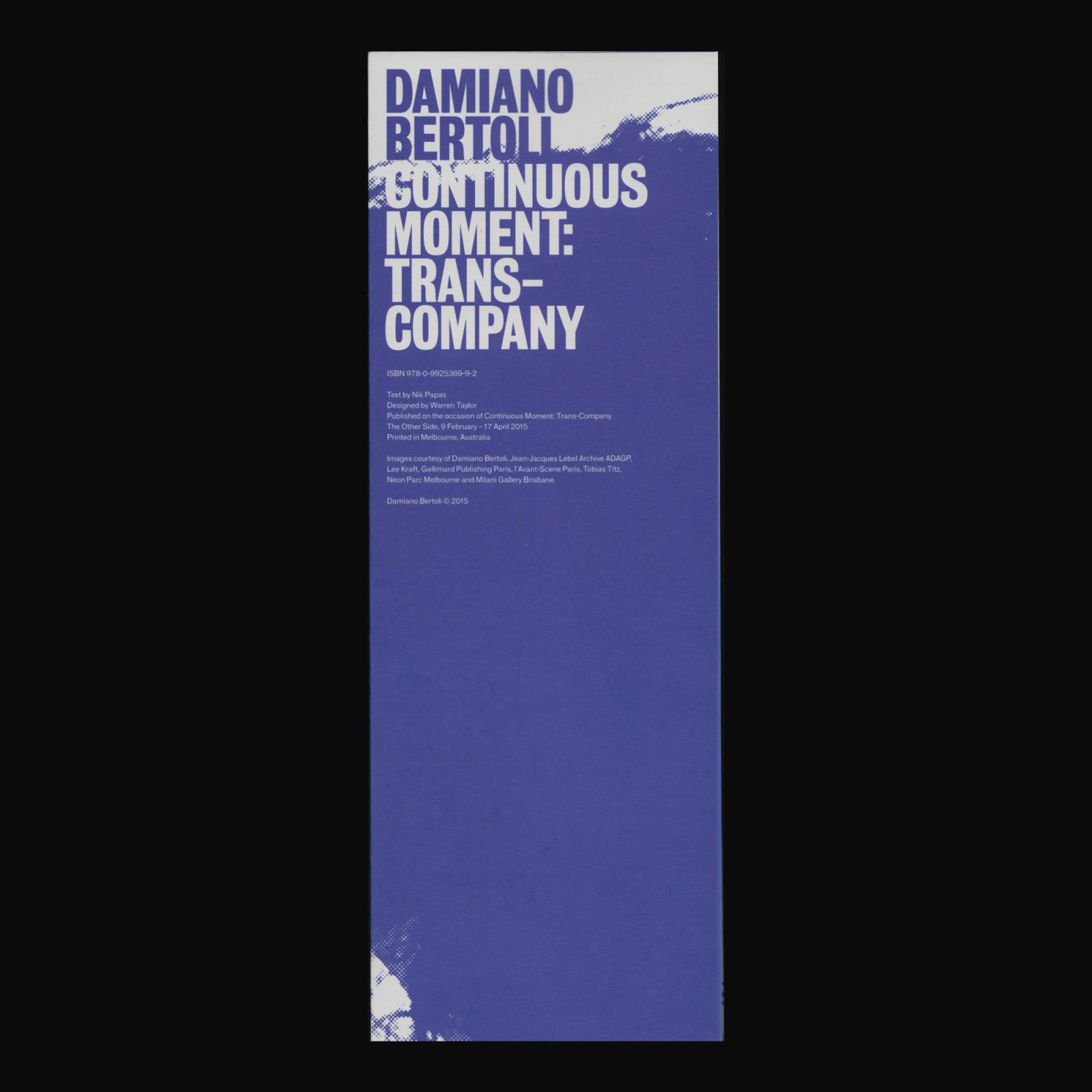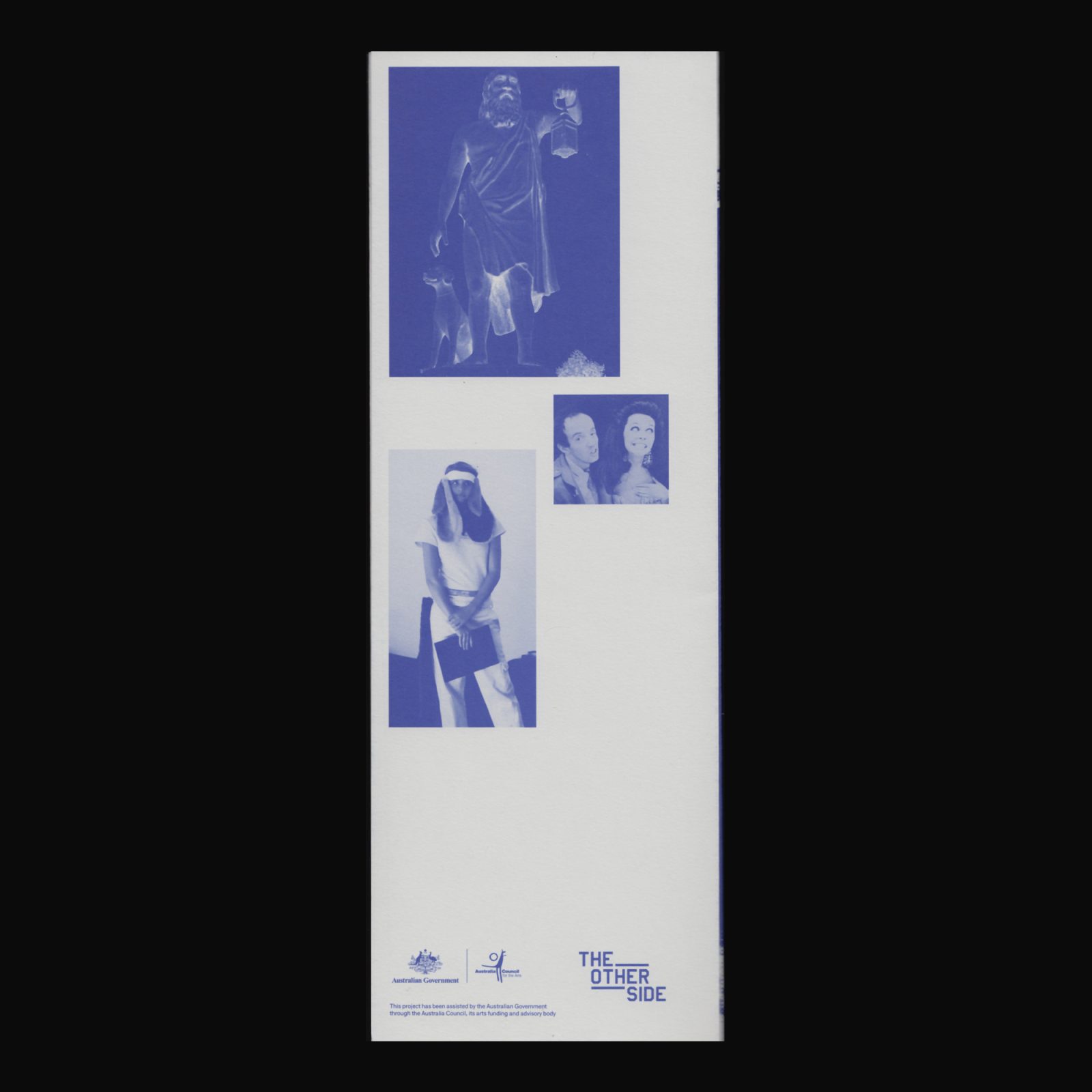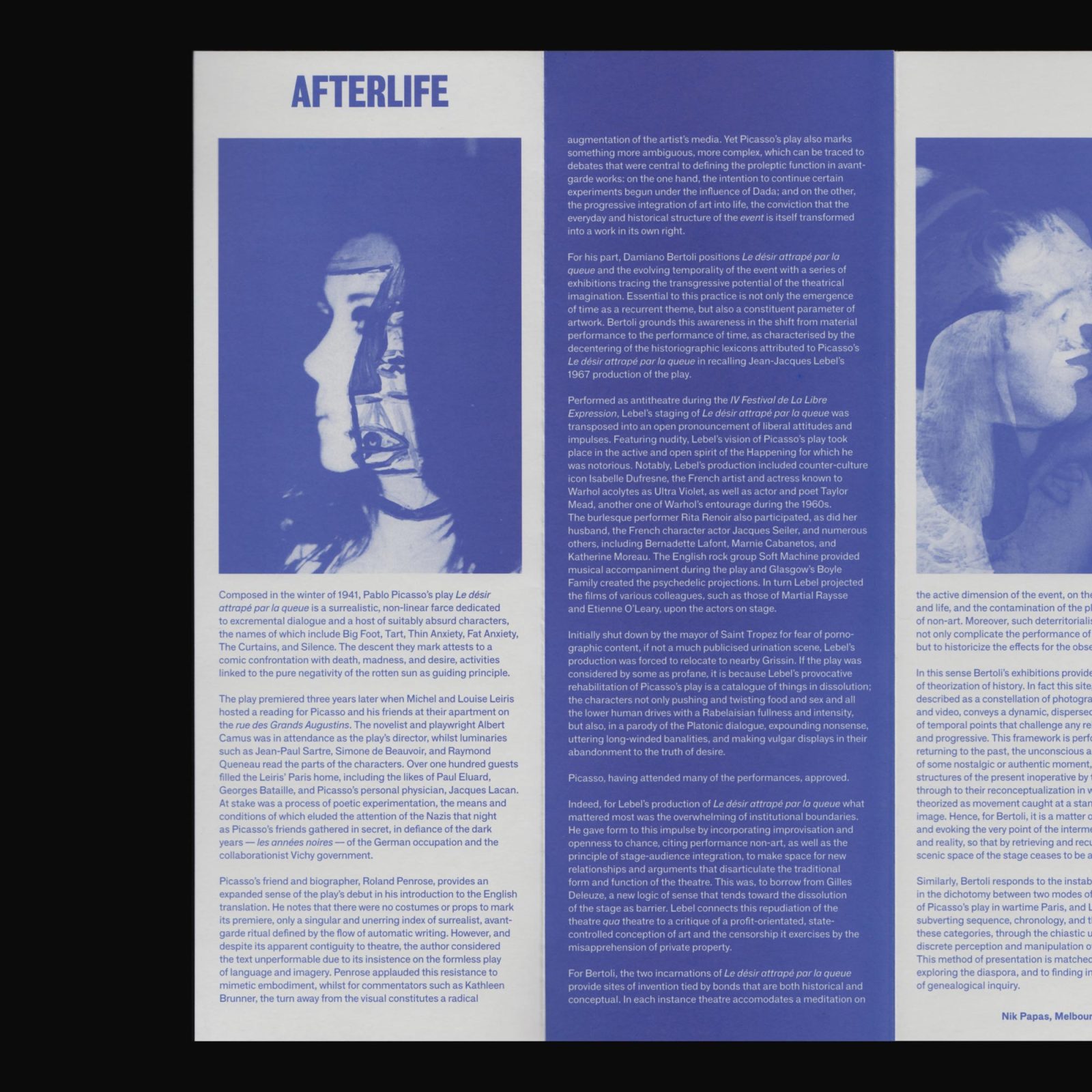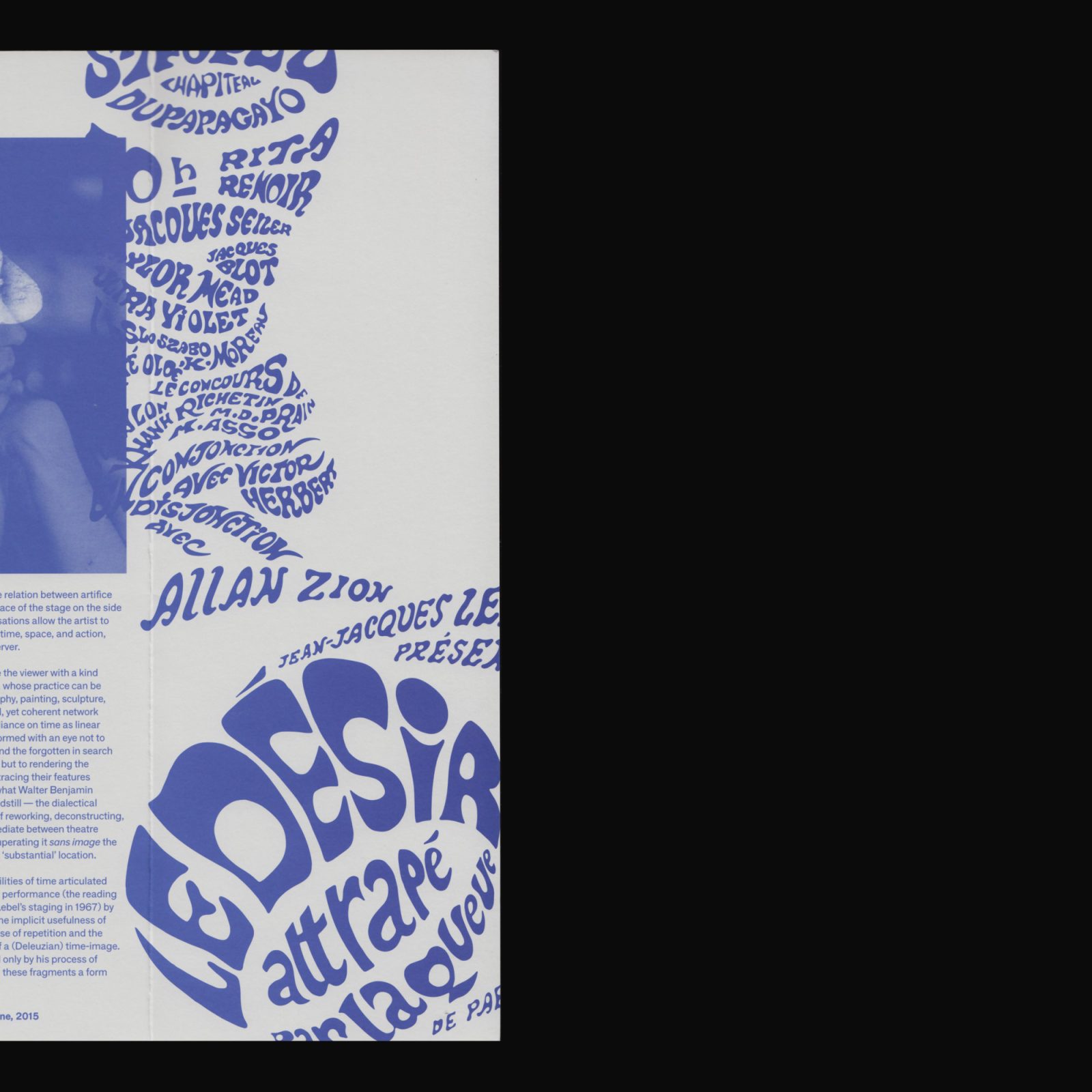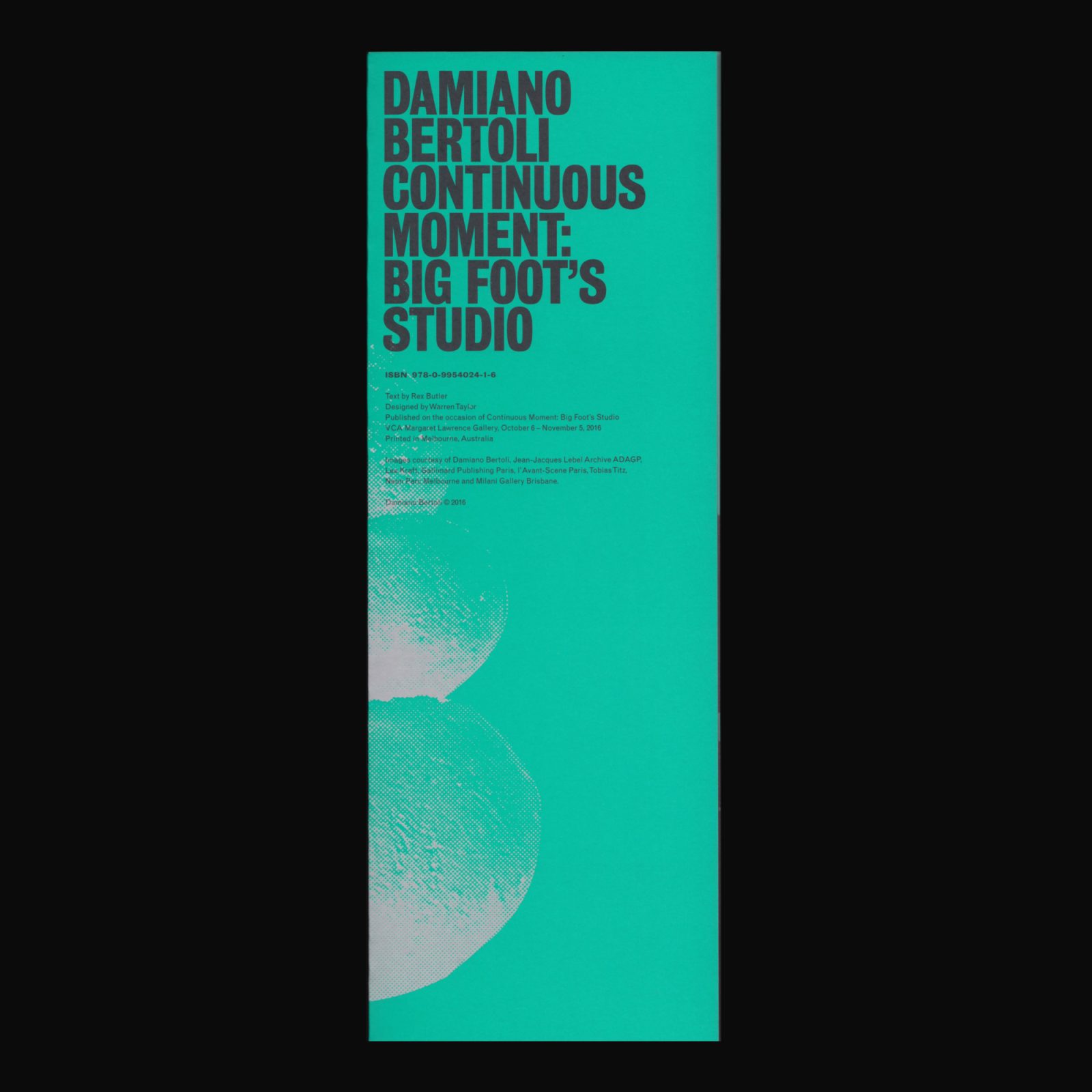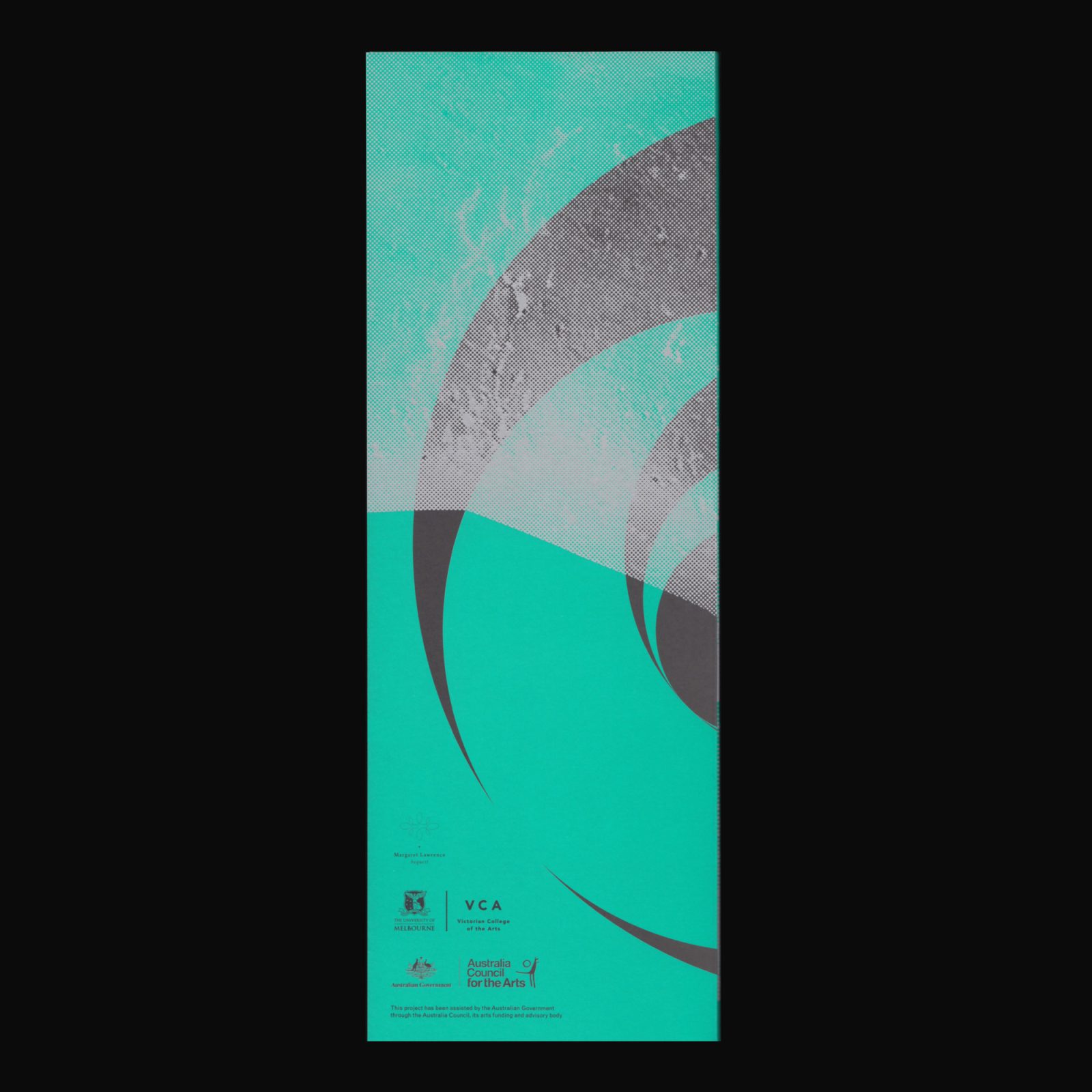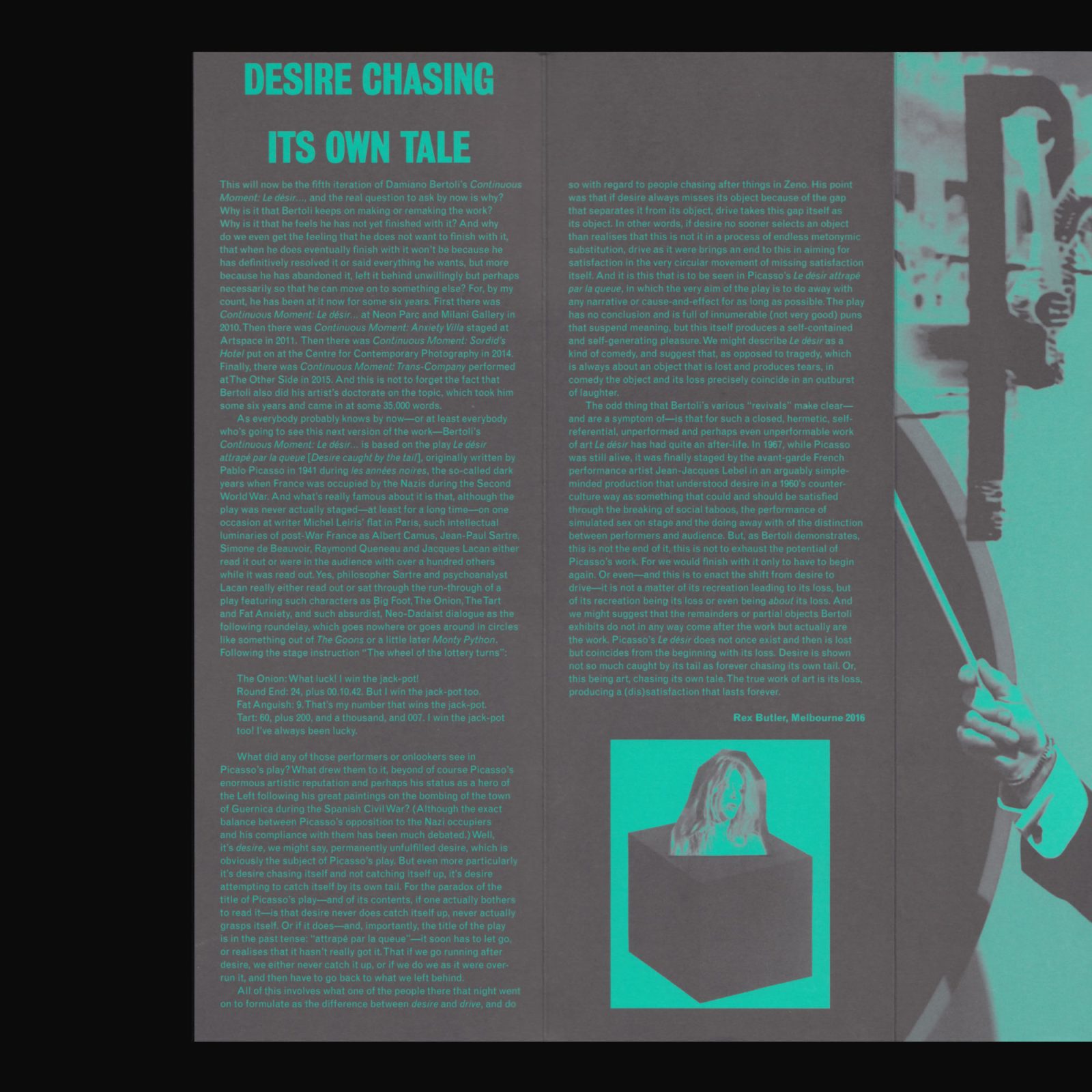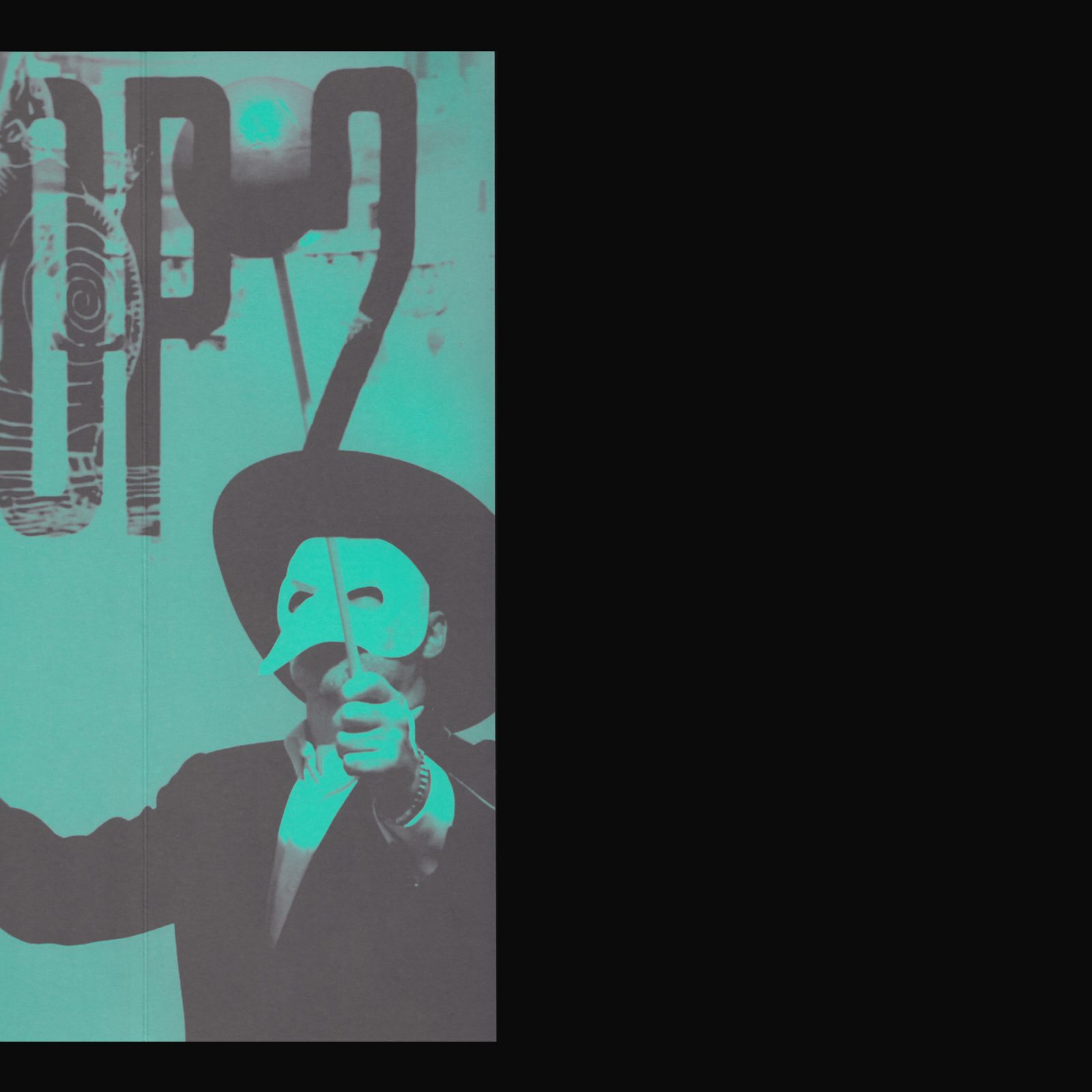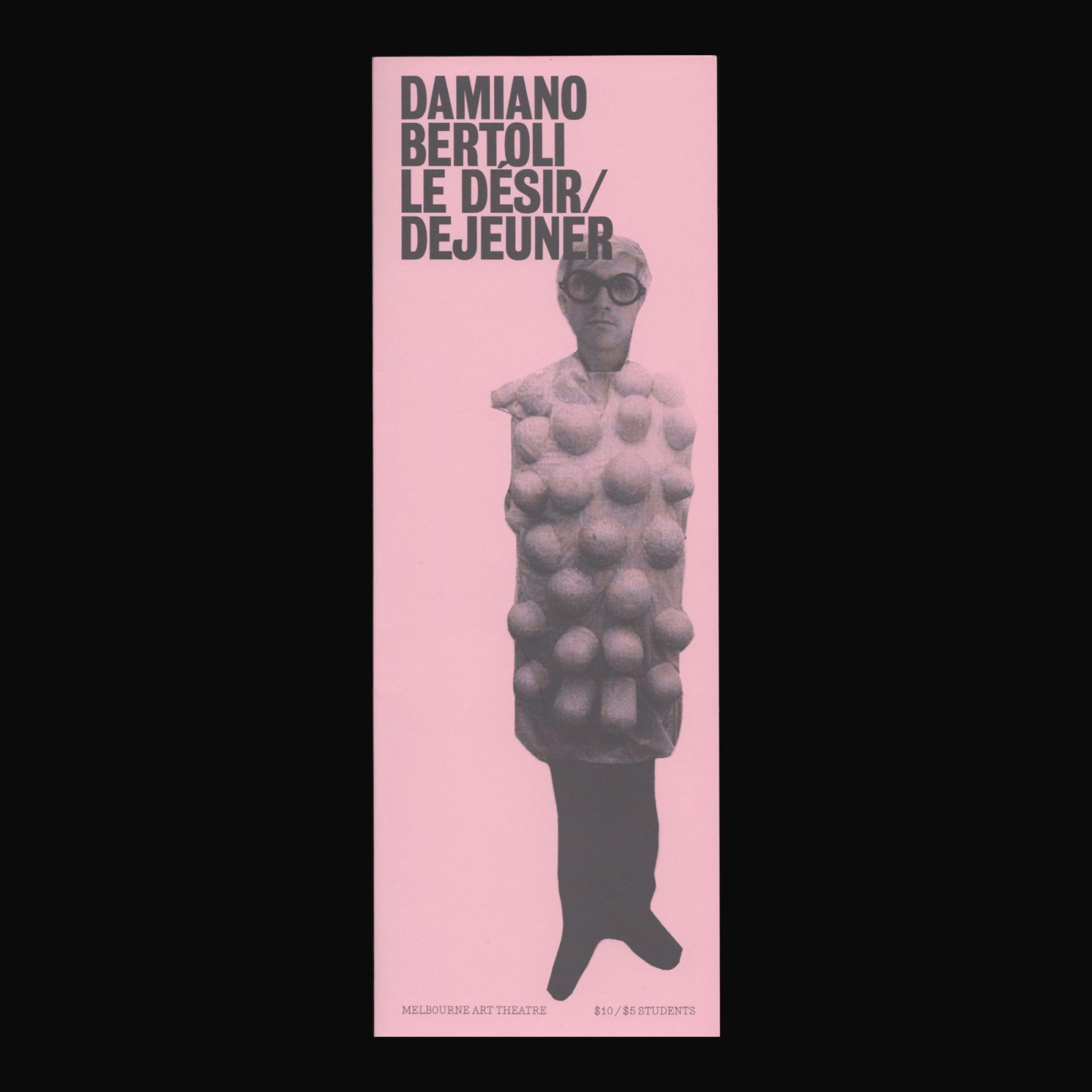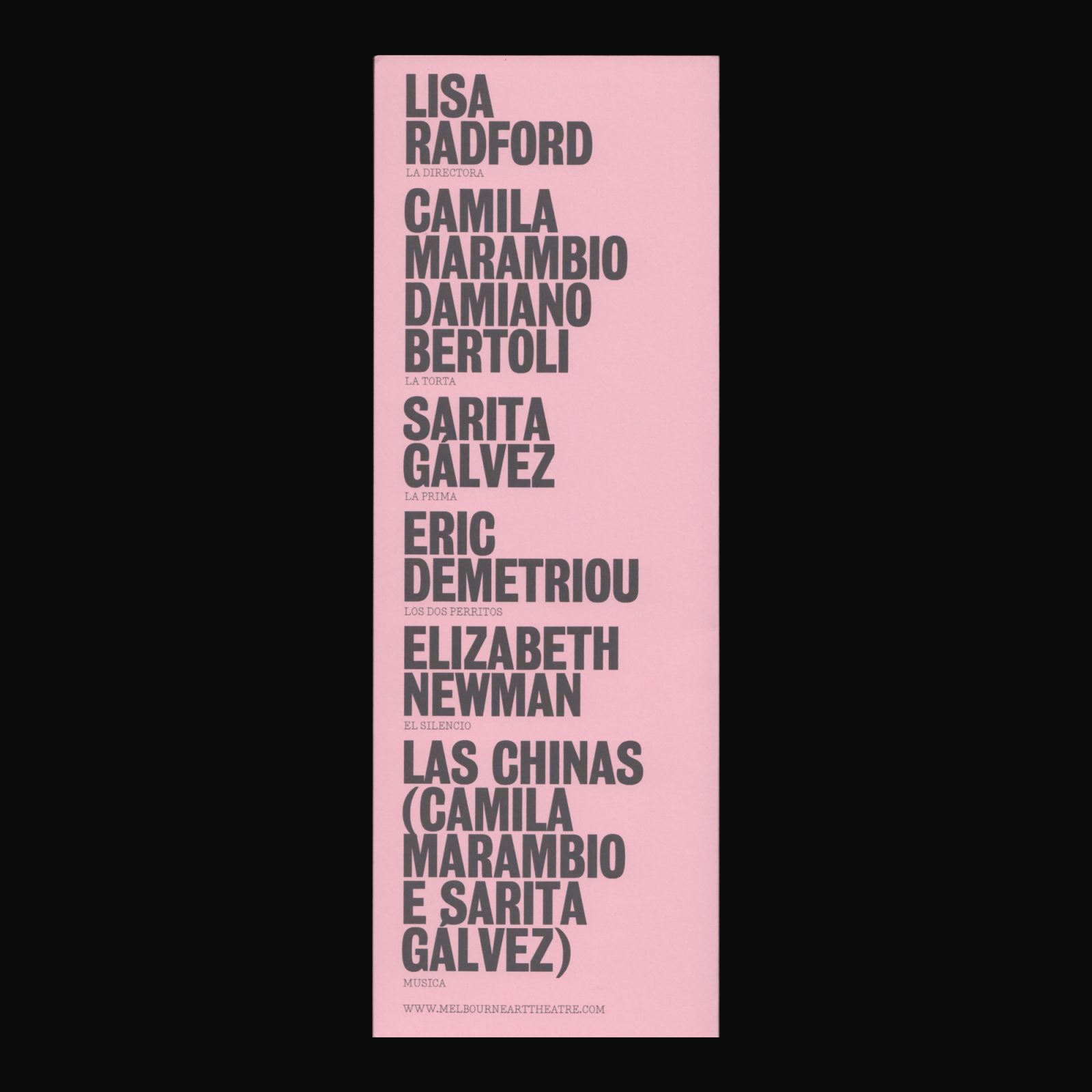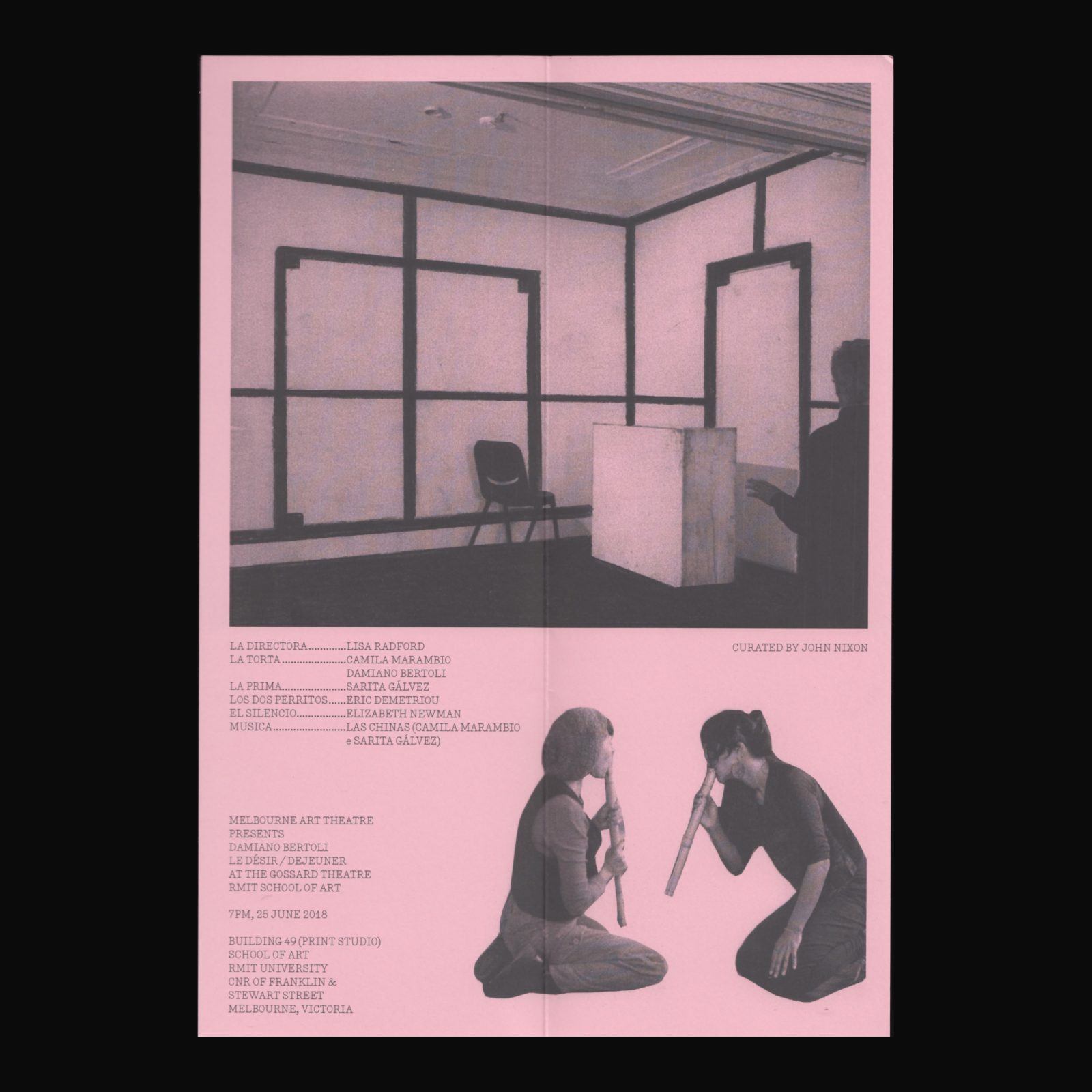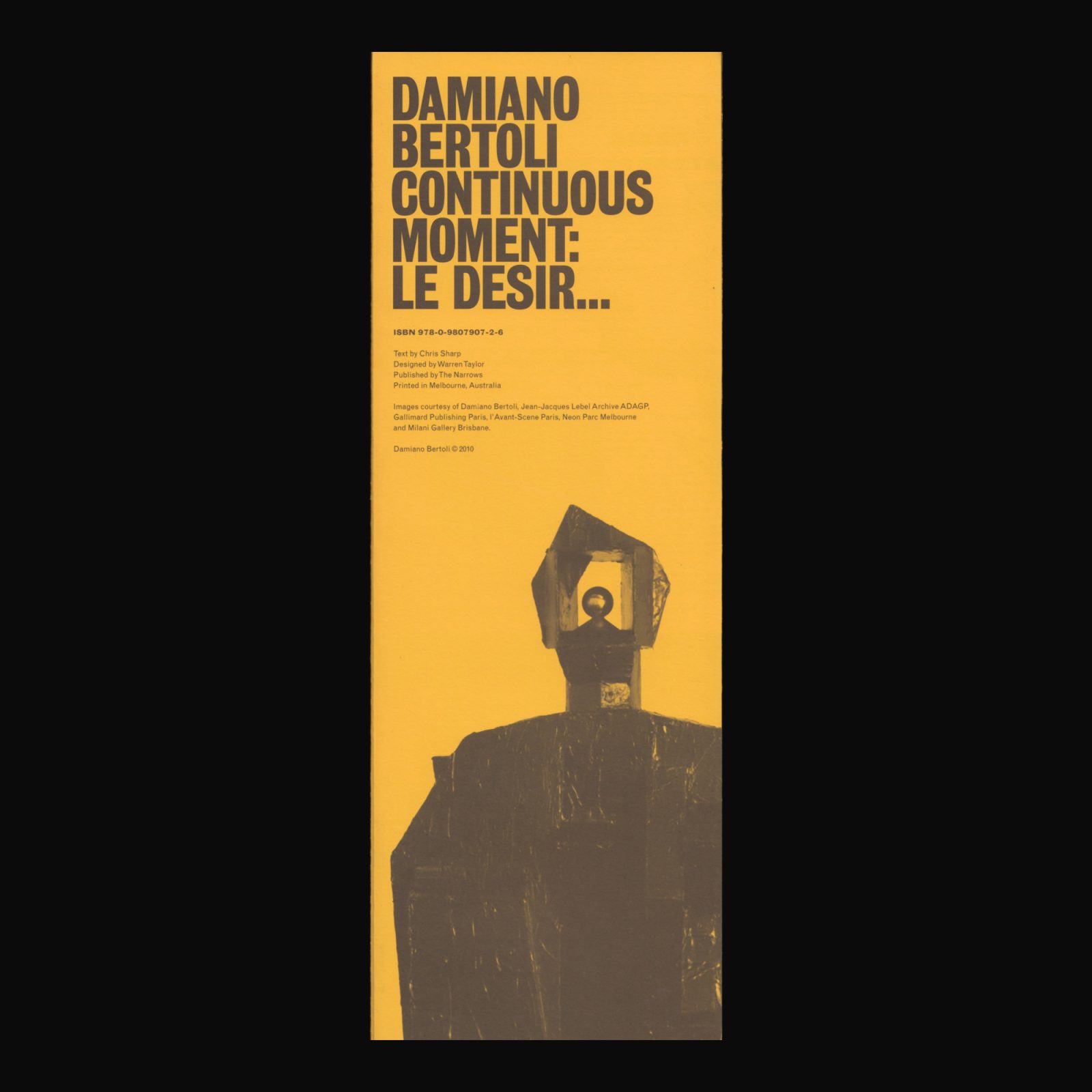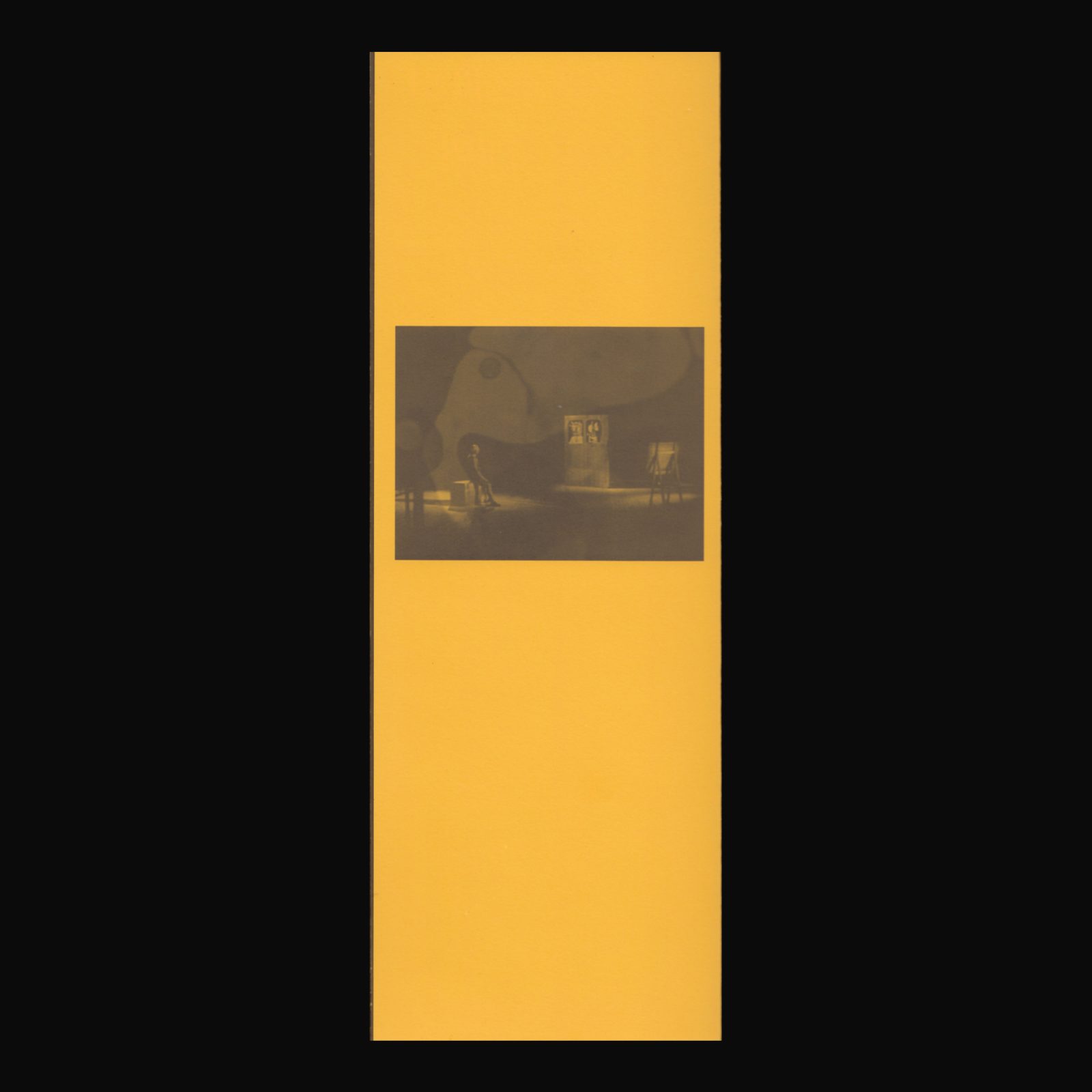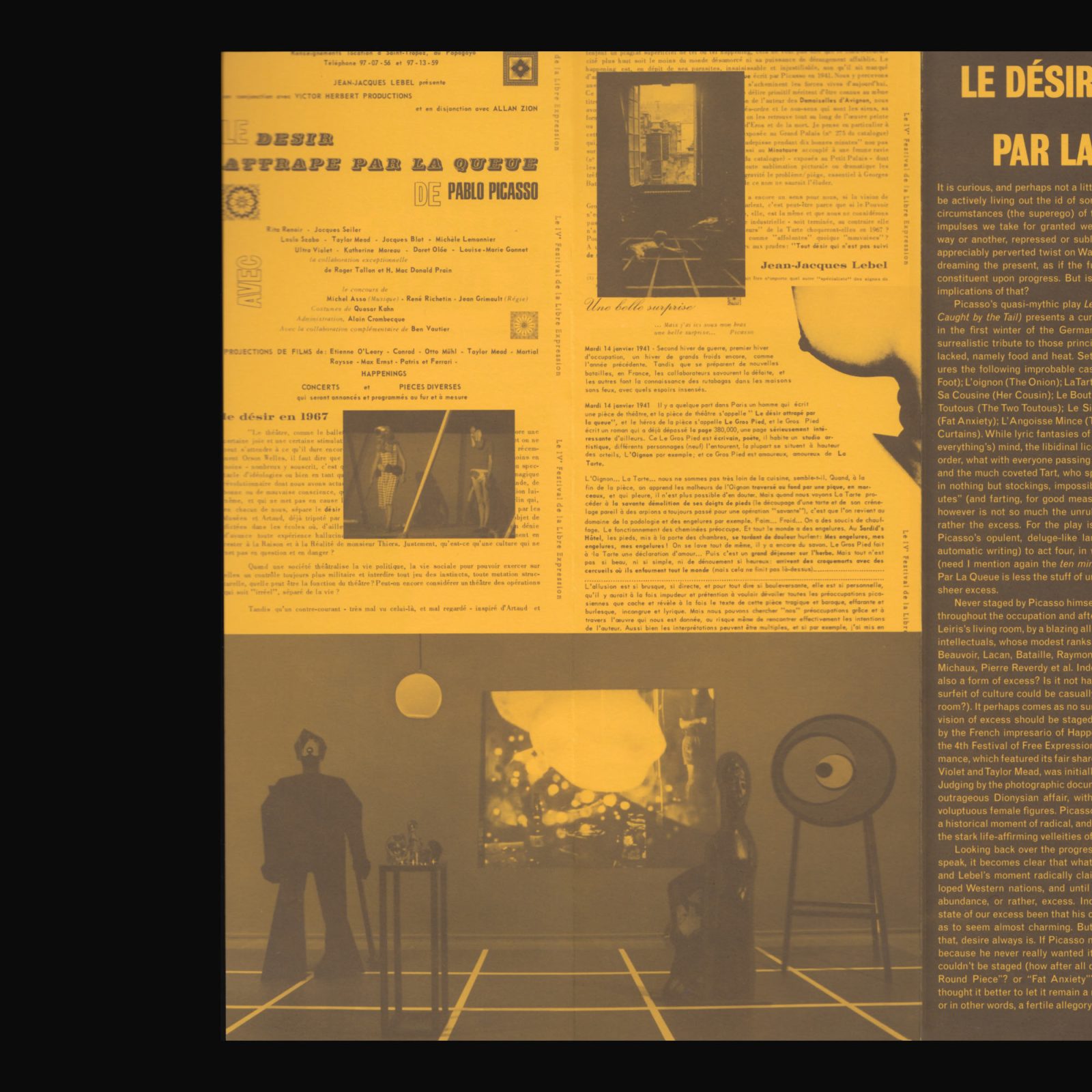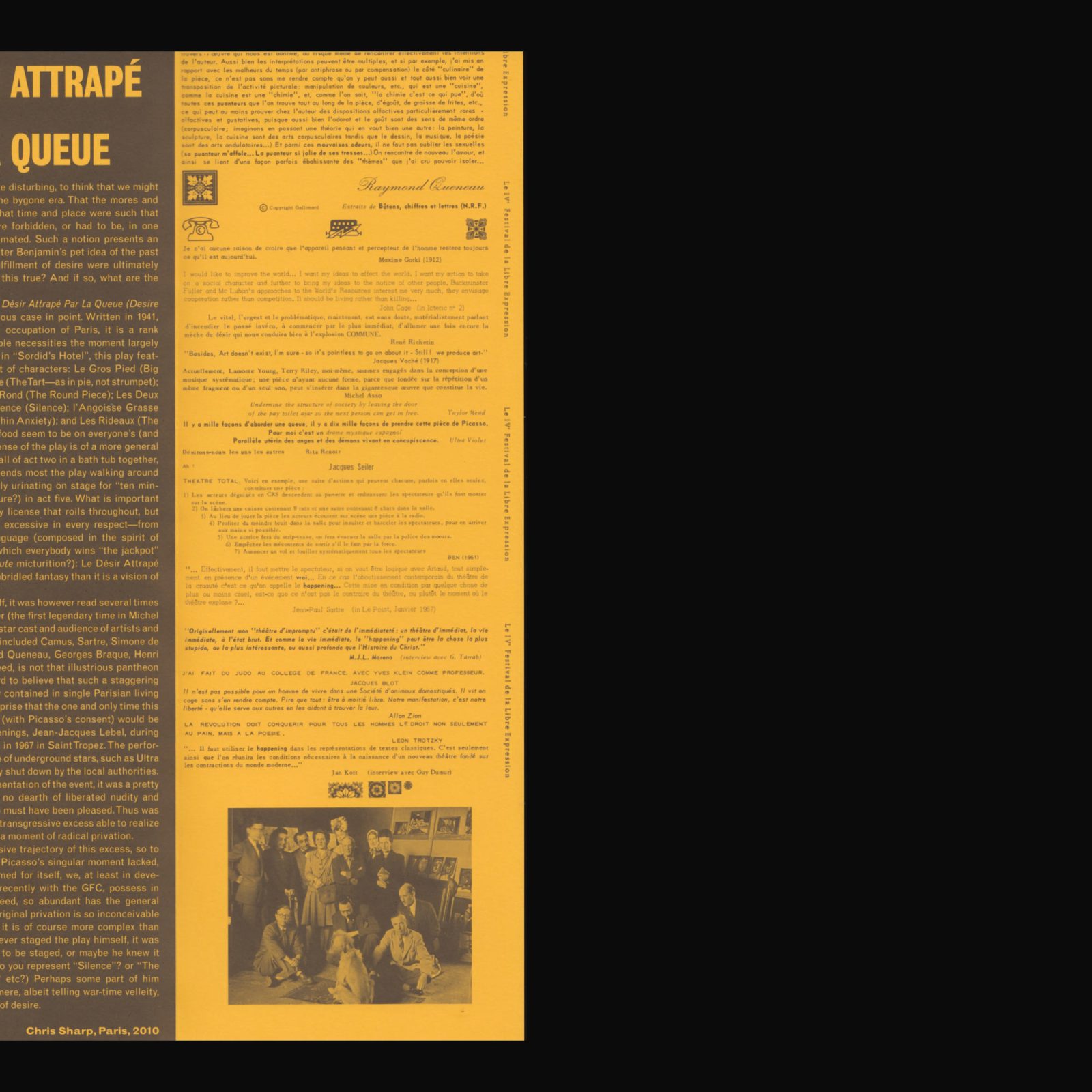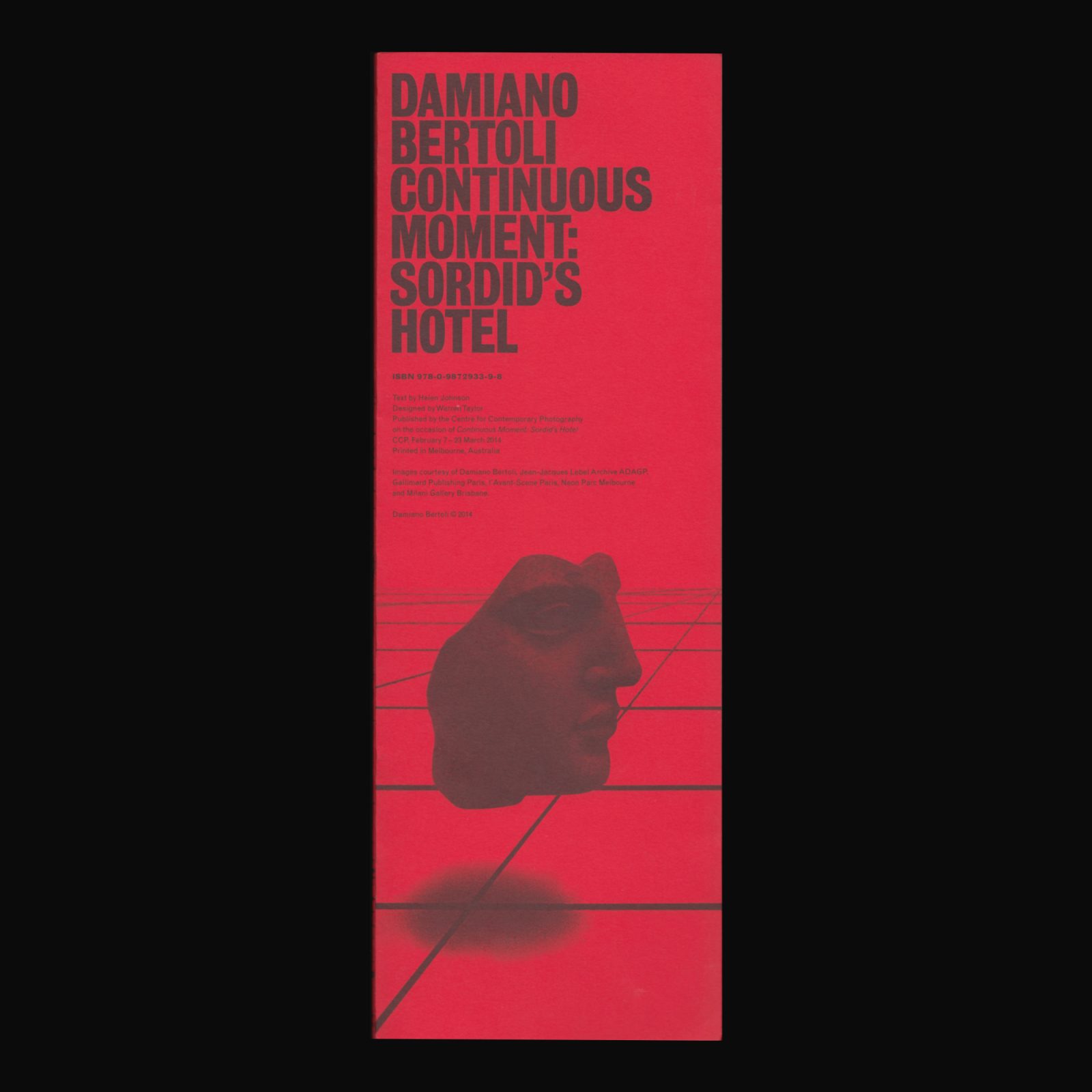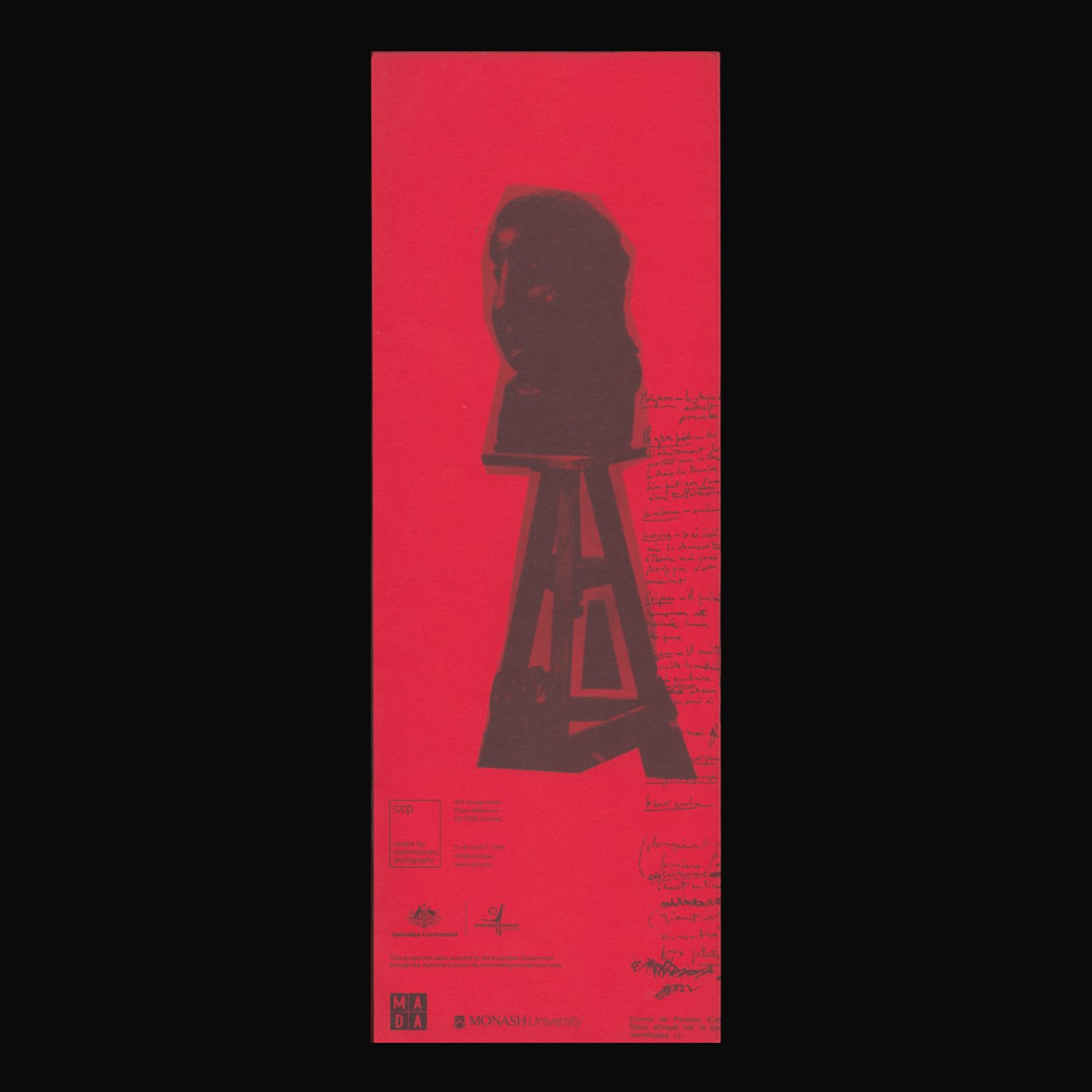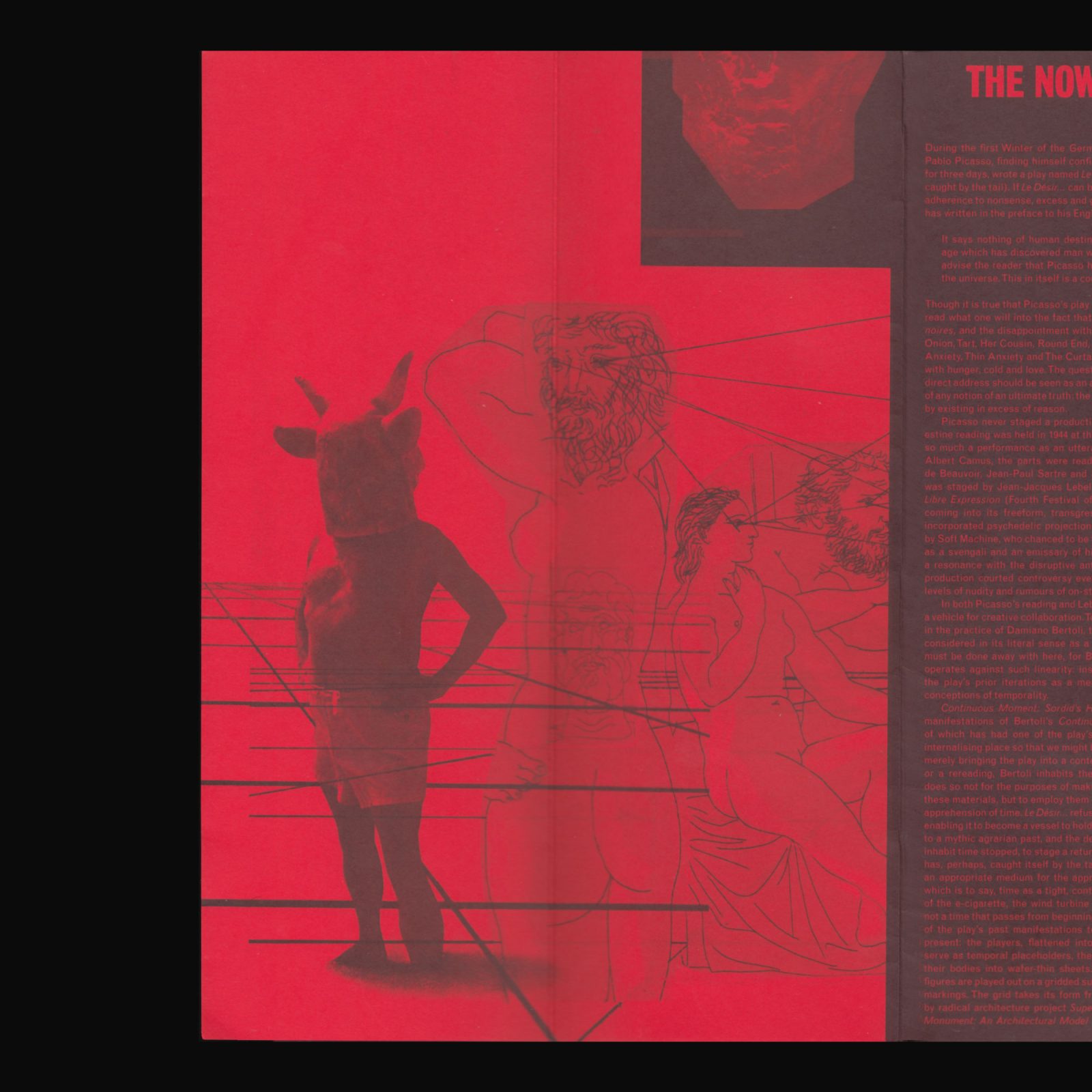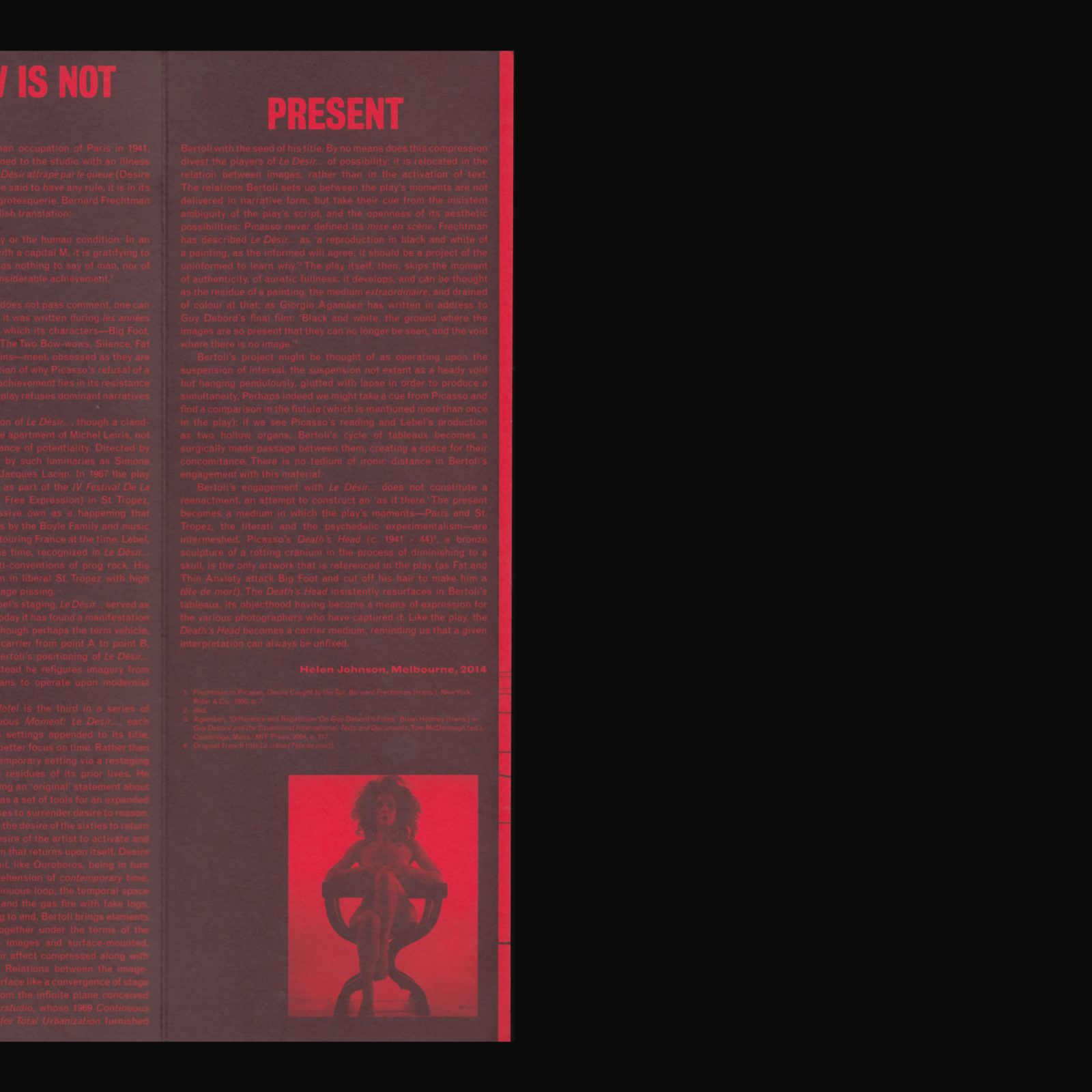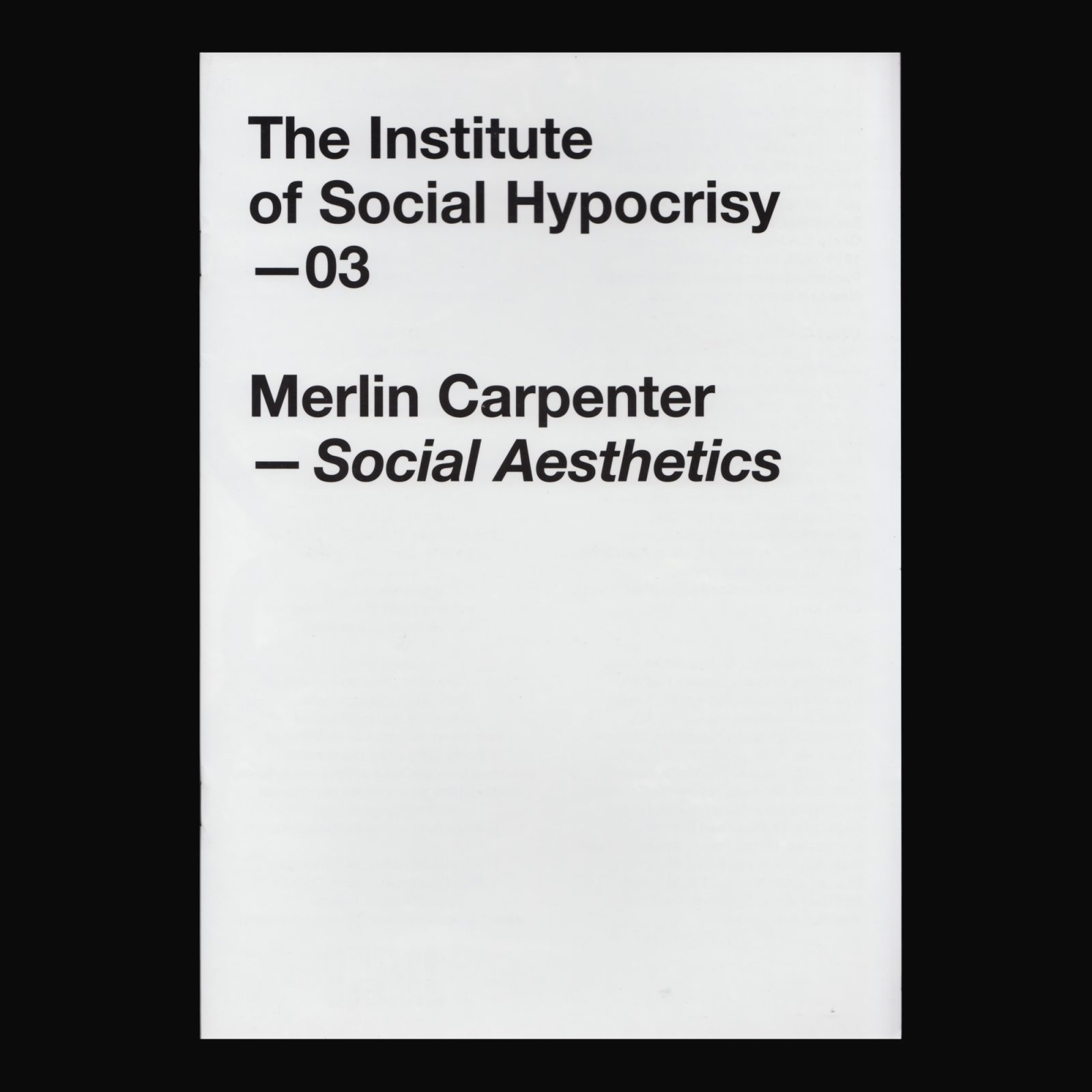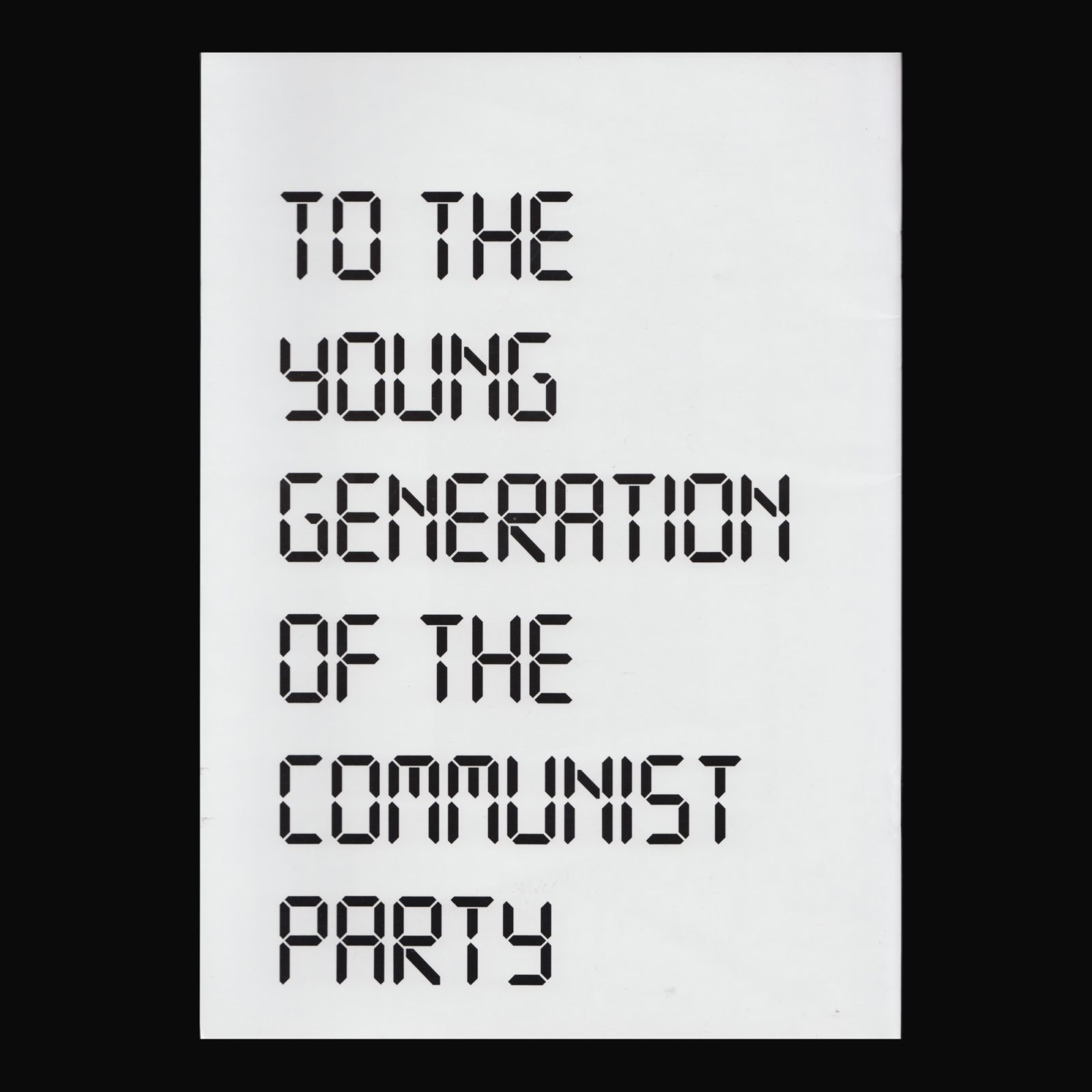Produced on the occasion of Continuous Moment: Trans-Company, The Other Side, 9 February–17 April, 2015.
Continuous Moment: Trans-Company is part of Bertoli’s ongoing research and investigation into Picasso’s play Le Désir Attrapé par la Queue (Desire Captured by the Tail). Referring to both a 1944 reading of the play and a staging of the play in 1967 by Jean Jacques Lebel, Bertoli’s work addresses ideas of repetition, reprise and continuity. Like Picasso’s text and Lebel’s production, Bertoli draws on a vast network of references and influences. In this light,Continuous Moment: Trans-Company can be understood as an assemblage of existing voices through which Bertoli is part of the aggregating authorship around ‘Le Désir’.
Text by Nik Papas. Designed by Warren Taylor.
